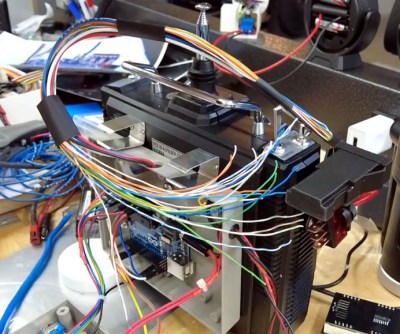17

Obviously, the most iconic piece of fictional hardware from the Back to the Future films is Doc Brown’s DeLorean DMC-12 time machine. But we’d have to agree with [Jason Altice] of CodeMakesItGo that the second-most memorable gadget is the modified Futaba remote control used to control the DeLorean from a distance. Now, thanks to his detailed build guide, you can build your own version of the time machine’s controller — complete with working speed readout.
Now to be clear, [Jason] isn’t claiming that his build is particularly screen accurate. It turns out that the actual transmitter used for the prop in the film, the Futaba PCM FP-T8SGA-P, has become difficult to find and expensive. But he argues that to the casual observer, most vintage Futaba transmitters are a close enough match visually. The more important part is recreating the extra gear Doc Brown bolted onto his version.

To that end, [Jason] was able to source some screen accurate hardware to kit out his transmitter, such as the Unibox 140 project box and the metal 9 V battery clips. Other components, like the lighted Molex 1820 switch, were harder to track down. Luckily we live in the age of cheap desktop 3D printers, and he was able to run off an impressively accurate replica without too much trouble.
Of course, the stand out feature is the seven-segment LED speed indicator. Each digit is a separate 25 mm (1 inch) SC10-21SRWA display, which have been mounted together on a custom PCB along with a TM1650 controller. An Arduino Uno inside the Unibox 140 drives the display, and receives speed data from the transmitter in the car using a long-range Reyax LoRa RYLR998 module.
[Jason] built the GPS-equipped “speed box” to closely resemble the movie version, albeit with three functional digits compared to only two in the original prop. Internally it’s using the same LED display, LoRa module, and Arduino Uno as the transmitter. We liked the approach of keeping the hardware more or less the same on both sides of the link, keeps things nice and simple.
Now you certainly don’t need a DeLorean time machine to test out your finished remote control, but we appreciate that [Jason] went through the trouble of renting one so he could show off his creation in style. The final product looks great, and ranks right up there with the replica time circuits on the list of BttF props we’d love to have up on the shelf.


